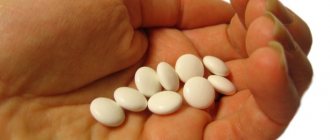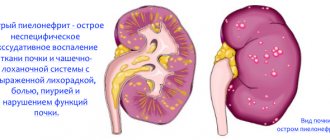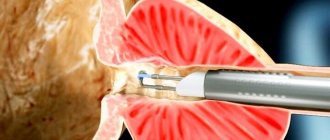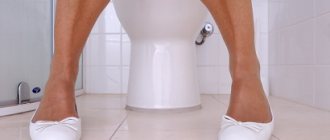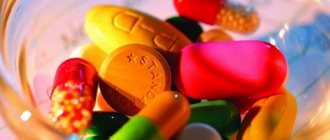What is arterial hypertension
Arterial hypertension or hypertension is one of the most common diseases of the cardiovascular system. If previously it was observed only in elderly patients, today hypertension occurs in young women (including pregnant and lactating women) and adolescents .
Arterial hypertension is understood as a chronic increase in blood pressure, when the lowest indicator (diastolic pressure) exceeds 90 mm Hg, and the highest (systolic pressure) exceeds 140 mm Hg.
To make a preliminary diagnosis, at least three measurements taken at different times are necessary. It is important that the person is in a calm state during measurements.
Risk factors, causes of high blood pressure in women during lactation
An increase in blood pressure during lactation can provoke:
- regular stress and nervous overstrain (after childbirth, the body is in a state of shock, the elimination of which requires enormous efforts, both moral and physical);
- heredity, various acute and chronic diseases observed in close relatives;
- bad habits (alcohol abuse, smoking);
- obesity;
- problems with the adrenal glands, pituitary gland or thyroid gland;
- diseases of the heart and blood vessels, such as atherosclerosis, heart failure, angina pectoris, myocarditis;
- kidney prolapse, glomerulonephritis, stenosis, polycystic disease or kidney tumors;
- hormonal changes associated with the birth and gestation of a baby (an excess of hormones leads to spasm of blood vessels and increased blood pressure).
Another reason for increased blood pressure during lactation is a sharp increase in circulating blood volume . Since the baby grows quickly and constantly needs milk, the female body has to work harder.
Consequences
You should not postpone a visit to the doctor, as delay is fraught with swelling of the mammary glands . Vascular spasms prevent the normal flow of milk through the ducts, which leads to the development of congestion . The danger lies in the fact that there are microcracks in the nipples, through which bacteria can penetrate into the area of stagnation and form a focus of inflammation .
Lack of proper treatment for hypertension can lead to damage to various organs. Particularly vulnerable are the kidneys, heart, blood vessels, brain and eyes.
Thus, the most common consequences of arterial hypertension include:
- heart failure;
- atherosclerosis;
- stroke;
- blurred vision;
- myocardial infarction;
- kidney disease (renal failure);
- metabolic syndrome;
- complications of diabetes;
- chronic cerebral circulatory disorder.
Some of the listed ailments can lead to incapacitation, disability, and in the worst case, death. Knowing the symptoms of hypertension will allow you to detect the disease at an early stage and promptly consult a doctor.
Video: “Features of hypertension in women”
First aid
As soon as you notice that your legs are swollen after childbirth for no apparent reason (i.e. you did not receive intravenous infusions during the birth of your baby and you have never suffered from a disorder of the genitourinary or circulatory systems), try to solve this problem yourself with the following ways.
- Reduce fluid intake to 1.5 liters per day. To prevent this from affecting lactation in any way, drink hot tea with milk.
- Try to get more rest. Reduce the load on your limbs: walk less (if swelling has developed in your legs), do not carry your baby in your arms all the time (if the problem affects them). Start doing gymnastics.
- While sitting, try to raise your legs higher.
- To relieve swelling of the perineum, apply a heating pad with ice.
- Eliminate fried, salty, spicy, and overly sweet foods from your diet. But it’s worth paying attention to sea buckthorn, viburnum, lemons, grapes, tomatoes and cranberries.
- Daily warm and cold baths will help get rid of swelling after childbirth, to which it is useful to add sea salt, chamomile, juniper, birch leaves, and mint.
- Put your baby to your breast more often.
- Ask someone from your family to massage the swollen areas in the evenings.
- If you know for sure that you have severe swelling of your legs due to problems with the veins, take a contrast shower several times a day. It activates blood circulation and strengthens blood vessels.
- In addition, those whose legs are very swollen after childbirth can be recommended to wear comfortable, therapeutic compression garments (stockings or tights, for example).
- Try to sleep on your left side: this position will allow you to remove swelling within a few days, as it improves fluid outflow and blood circulation.
If you did everything correctly, the defect will disappear in just a week, returning you to your former shape. However, everything is much worse if after childbirth the swelling does not go away for a long time. In this case, you should worry and seek help from doctors.
Symptoms
Most often, the culprits of arterial hypertension are problems that appear during or before pregnancy.
In most cases, blood pressure increases due to preeclampsia, which is indicated by the following symptoms:
- high blood pressure levels;
- a constant increase in the concentration of protein in the urine;
- persistent swelling of the whole body or limbs.
If blood pressure rises during pregnancy and remains so two to three months after birth, the patient is diagnosed with arterial hypertension of I or II degree. The woman is examined and, based on the data obtained, a treatment regimen is drawn up. During this time, the doctor monitors the condition of the heart and blood vessels, organs of vision, and kidneys.
Sharp surges in pressure are accompanied by general malaise, nausea, the appearance of “spots” before the eyes and migraine attacks.
Diagnostic methods
Diagnosis of hypertension in lactating women is carried out on the basis of a number of examinations :
- blood pressure measurements;
- ECG (electrocardiogram);
- echocardiography;
- physical examination;
- Dopplerography;
- Ultrasound of the thyroid gland;
- arteriography;
- biochemical blood test.
Carrying out the above measures allows you to reliably diagnose hypertension in a nursing patient, establish the causes of the disease and prescribe appropriate therapy that takes into account the fact of feeding.
Diagnosis of the disease
A doctor may suspect pyelonephritis based on complaints, examination and medical history. To clarify and determine the extent of the process, a more in-depth examination is necessary. Urine is thoroughly analyzed. The following tests are performed with it:
| Type of study | Features of the event |
| General research | With pyelonephritis, the TAM will have increased leukocytes, protein, possibly casts and bacteria. |
| Bacteriological culture of urine for flora | It is important to do this test before starting antibiotics. Otherwise, the results may not reflect the true process. |
| Urine according to Nechiporenko | Gives a more detailed result on the content of leukocytes. |
| Research on Zimnitsky | It is carried out to identify kidney dysfunctions, which may be the first signals on the path to renal failure. |
| Three-glass sample | It is carried out to determine the location of inflammation (kidneys, bladder or urethra). In this case, it is necessary to collect urine sequentially into three containers during one act of urination. |
Instrumental diagnostic methods are used. Most often this is:
- Ultrasound examination of the kidneys. In this case, you can see signs of inflammation, an increase in size, accumulation of fluid in the pelvis and ureters, etc.
- X-ray methods are widely used - various types of urography and others. In this case, the urinary system is filled with a contrast agent and a series of images is taken. They can be used to judge some serious changes in the kidneys.
- CT and MRI are often performed in case of tumor processes or suspicion of them.
Sources
- https://UroHelp.guru/pochki/pielonefrit/posle-rojdeniya-rebenka.html
- https://kidney.propto.ru/article/mochegonnye-sredstva-pri-laktacii
- https://aurolog.ru/pochki/nefrit/lechenie-pielonefrita-v-period-laktacii.html
- https://GrudInfo.ru/pielonefrit-pri-grudnom-vskarmlivanii/
Treatment during lactation
A sharp increase in blood pressure in nursing women requires immediate medical attention. If you have cardiovascular diseases, it is important to have a tonometer on hand so that you can measure your blood pressure in any situation.
Before the ambulance arrives, it is important:
- take a comfortable position, do not get up or walk, so as not to aggravate the situation;
- take medications prescribed by a doctor;
- open doors or windows to let fresh air into the room (especially if you experience suffocation or sharp pain in the heart area);
- take measures to warm the body if chills are felt and the limbs begin to get cold;
- stay calm to prevent further increases in blood pressure.
Drugs
The fight against arterial hypertension during lactation is possible only under the supervision of the attending physician. If hypertension is caused by gestosis, the patient may be admitted to a hospital.
With gestosis, eclampsia and preeclampsia develop rapidly, so it will be easier to keep the situation under control in the hospital.
As for medications, they are prescribed with caution during breastfeeding . Since most drugs can pass into milk and, accordingly, into the child’s body, you need to carefully choose drugs for the treatment of hypertension. Sometimes doctors recommend stopping medications altogether, for example, in cases where blood pressure rarely rises or quickly returns to normal levels.
With persistently high blood pressure, when it is impossible to do without pills, the patient may be prescribed Methyldopa or Nifedipine .
Also allowed during lactation are drugs such as Verapamil, Dopegit and b-blockers . The time of administration and dosage must be agreed with a specialist.
If there is a sharp jump in blood pressure, you can drink motherwort or valerian in tablets, take a Methyldopa or Dopegite tablet, placing it under the tongue. If blood pressure is stably elevated, medications are taken in a course.
If during a crisis the resting heart rate does not exceed 90 beats/min, you are allowed to take one Nifedipine tablet (this can be done once and in the dosage indicated in the instructions). It must be remembered that frequent use of the above-mentioned medications (especially in large dosages) is dangerous for the newborn. Before taking any antihypertensive medications, you should consult your doctor.
Prohibited for use during breastfeeding are::
- drugs related to beta-blockers: Nadolol, Atenolol, Metoprolol;
- ACE inhibitors, angiotensin II receptor blockers and reserpine, which have a detrimental effect on the newborn’s body;
- diuretics and clonidine, which can harm the baby and reduce lactation;
- injections of No-shpa, Magnesium sulfate, Papaverine or Dibazol (they will bring down high blood pressure levels, but soon the condition will worsen again).
Video: “What medications can be taken during pregnancy and lactation?”
Treatment at home or with folk remedies
If an increase in blood pressure is accompanied by migraines, you can drink hawthorn juice , mistletoe tincture or herbal tea from meadowsweet . It is also useful to take motherwort tincture or a homemade drink.
To prepare this drink, mix 2 tbsp. juniper cones, 2 tbsp. lemon balm, 1 tbsp. dill, 3 tbsp. motherwort and 3 tbsp. peppermint. Take 2 tbsp. prepared mixture, place in a thermos and pour 1 liter of boiling water. The infusion can be drunk after three to four hours, half a glass a day: once in the evening and once in the morning. Take the infusion 30 minutes before a meal or half an hour after it, without drinking any other liquid.
You can also reduce blood pressure with the help of medicinal baths:
- Relaxing baths with valerian. Add regular or sea salt to the water, and then pour a bottle of tincture into it. Take this bath for 10-15 minutes.
- Clay baths. Soak 3-4 handfuls of clay in a small volume of water. The mixture is ground until a homogeneous mass is formed. The bath is filled with water whose temperature exceeds 37 degrees. Pour the clay mixture into the bath, adding a head of fresh crushed garlic. Take a bath for 25 to 30 minutes, while simultaneously giving yourself a massage. At the end of the procedure, rub the body with a hard towel.
Diet
Treatment of hypertension requires adherence to a certain diet . First of all, a woman has to give up salted, fried, smoked, fatty and spicy foods, seafood, confectionery, jam, fatty fish and meats, heavy cream and sour cream.
Also, high blood pressure is incompatible with smoking, drinking coffee, tea and alcohol. The listed drinks can be replaced with water, fresh fruit and vegetable juices.
For arterial hypertension, it is recommended to eat as many fruits and vegetables as possible , fresh or cooked with minimal heat treatment.
To get rid of extra pounds, you need to contact a nutritionist who will create a menu for every day and help you say goodbye to excess fat mass.
Localization and manifestations
Before reading information about the manifestations of swelling depending on the nature of the disorder, you need to know exactly how to identify it. In order not to confuse the concepts of edema and swelling. In addition to discomfort in the legs, expressed as heaviness and bloating, the pathological condition can be determined by pressing on the problem area. To do this, press on the skin at the site of suspected swelling and observe the reaction. A healthy leg will immediately acquire its previous contours, and the remaining hole indicates the accumulation and retention of fluid in the tissues, i.e. about the presence of edema.
It is easy to determine the presence of leg swelling
The following signs are characteristic of poor diet and lifestyle:
- feeling of heaviness in the legs throughout the day;
- after physical activity the discomfort is most severe;
- the limbs swell and become larger in volume.
In case of kidney failure, a woman will experience:
- swelling, mainly in the morning;
- the tissues of the problem area will be loose;
- localization of edema most often on the feet and face;
Typical symptoms of impaired heart function may include:
- swelling of the extremities in the evening, because after a busy day the resources of the heart are depleted, the blood is no longer adequately supplied from the legs upward;
- the swelling is mild, after pressing it leaves a mark in the form of a pit;
- localization in the ankle area and further up to the lower leg and thighs;
- Spider veins and plaques may appear in parallel on different parts of the body;
- the problem area is likely to become blue.
If varicose veins are observed, then the characteristic signs are:
- heaviness and pain in the legs;
- rapid fatigue after short-term exercise;
- noticeable swelling occurs in the evening, accompanied by protruding dilated veins.
Whatever the cause of leg swelling, its main symptoms will be fatigue and pain.
Prevention
By following simple and effective measures to prevent hypertension, you can significantly reduce the likelihood of developing a chronic disease.
If there is a hereditary predisposition, blood pressure should be regularly monitored . You can improve your cardiovascular health through regular physical activity, proper nutrition, and quitting alcohol and smoking.
However, you need to monitor not only your body, but also your emotional state. In particular, it is recommended to be positive and avoid stressful situations.

